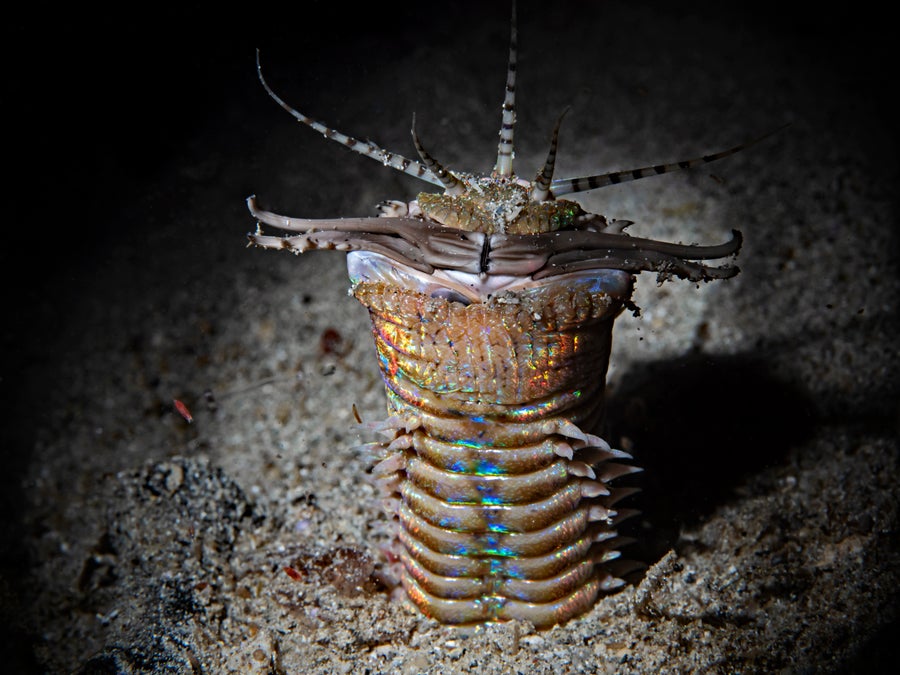Meet the Real-life Versions of Dune’s Epic Sandworms
A Dune-loving worm paleontologist makes the case that worms have been just as important on Earth as they are in the blockbuster film.
Sandworms pursue a crowd in this scene from Dune: Part Two
Warner Bros./FlixPix/Alamy Stock Photo
The film Dune: Part 2 might feature human actors Timothée Chalamet and Zendaya, but the biggest stars — at least literally — are the sandworms. The sandworms are central to the desert ecosystem of the fictional planet Arrakis, the film’s main setting, and to the culture of its inhabitants, the Fremen. Sandworms live underground and excrete a substance that becomes the all-important drug called spice, and the Fremen ride them like giant sandy freight trains. In the film’s first glamour shot of a sandworm, a house-sized mouth ringed with teeth erupts out of the sand to swallow a whole platoon of soldiers.
To find out whether the fictional worms in Dune share anything in common with real worms, Nature spoke with palaeontologist Luke Parry at the University of Oxford, UK. He studies worms from the Cambrian and Ordovician periods, which together lasted from roughly 540 million to 443 million years ago.
Dune’s sandworms can grow to a length of at least 450 metres, about 15 times that of the longest blue whale. How big do real-life worms get?
On supporting science journalism
If you’re enjoying this article, consider supporting our award-winning journalism by subscribing. By purchasing a subscription you are helping to ensure the future of impactful stories about the discoveries and ideas shaping our world today.
There [are] annelid worms that get up to several metres in length called eunicid worms [bristle worms]. They’re pretty gnarly, they have big jaws, they look a bit like Graboids from [the film] Tremors. Some of them are ambush predators. They eat octopuses, squid, vertebrates.

Bobbit worm at night (Eunice aphroditois).
Credit:…
Read the full article here







